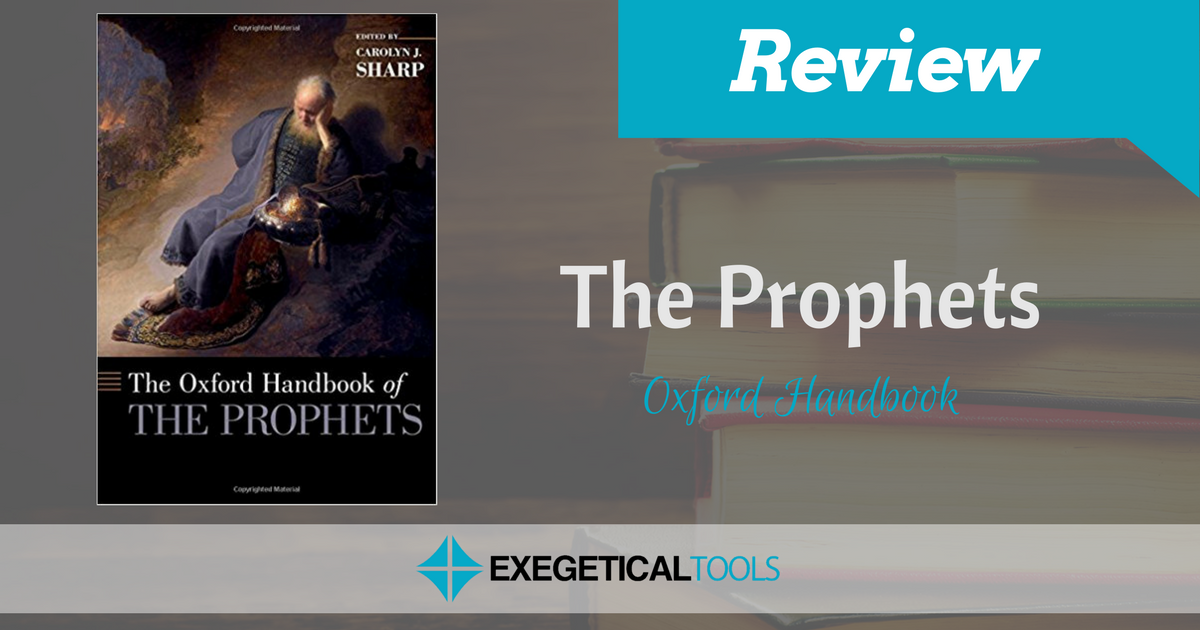The Oxford Handbook of the Prophets, ed. Carolyn J. Sharp (Oxford, 2016), 726 pp.
The Oxford handbooks are bulky compendiums of academic overviews of the current state of knowledge about a subject. We recently enjoyed reviewing The Oxford Handbook of the Bible in America, which is useful for challenging your own hermeneutic by surveying how different eras and movements in America have used the Bible. This new handbook on the prophets will be a more traditional tool for your hermeneutical abilities in the prophets.
The first part of this guide covers contextual issues, including ancient social and cultic contexts and historical methodologies for approaching the prophets and their texts. In this section the reader will find many useful essays that go well beyond introductory textbooks on the prophets. Martti Nissinen covers the evidence for prophetic intermediation in the ancient Near East, which is quite useful for understanding the Israelite prophets (with appropriate caveats made for the contextual approach to the OT). The third and fourth chapters cover prophecy in the diaspora and in Persian Yehud, which gives a comparative approach to how prophecy played out in different geographical locations.
The second part of the guide gets to interpretive issues. The largest section here is literary criticism, which demonstrates the recent academic discussions that the editors were interested in addessing. E.g., the Twelve have their own chapter, following on a newer method of reading the Twelve as a canonical unity.
In this second part there are also three “topical studies,” as they are labeled, which I found a bit odd since they don’t fit neatly into the rest of the volume. They cover the prophet as persona, prophetic words and acts as survival literature, and God and violence in the prophets.
The final chapters in this second part include the reception history of the prophets, including their use in the DSS, NT, rabbis, early Christianity, and medieval period. The chapter by J. Ross Wagner will be of special interest to NT scholars, although he unfortunately limits his discussion to Matthew, 1 Peter, and Rom 9-11.
The third part of the guide provides chapters on engaging the prophets. There are seven chapters on various readings of the prophets from different perspectives such as contemporary Judaism, feminism, womanism, materialism, postcolonialism, queer theory, and postmodernism. These types of essays can be intriguing, tiring, and challenging, so they’re worth some reading. This final part also includes interdisciplinary concerns, with two laudable inclusions on the prophets and pastoral care and the prophets and homiletics. The final two chapters survey the future of the study of the prophets.
The two most valuable parts of this guide are the sections on historical context and literary criticism. The first part of the guide can give the reader a much better understanding of the social and historical context of the prophets, which will always aid in biblical interpretation. The second part on literary criticism also gives the reader an understanding of many popular discussions, many of which are useful since they help the reader understand the structure and themes of various prophets, including the major prophets.
One omission I felt should have been included was a section or at least a chapter on the place of the prophets in OT theology. There is enough inner-biblical allusions in the prophets to warrant its own chapter, if not its own section, and these considerations can affect how one views the prophets historically and how one understands the history of Israel.
As with the other Oxford guides, the contributors are all experts in their area and the editors have brought together a useful volume that will aid students, teachers, pastors, and scholars.
Preview or buy it on Amazon.

